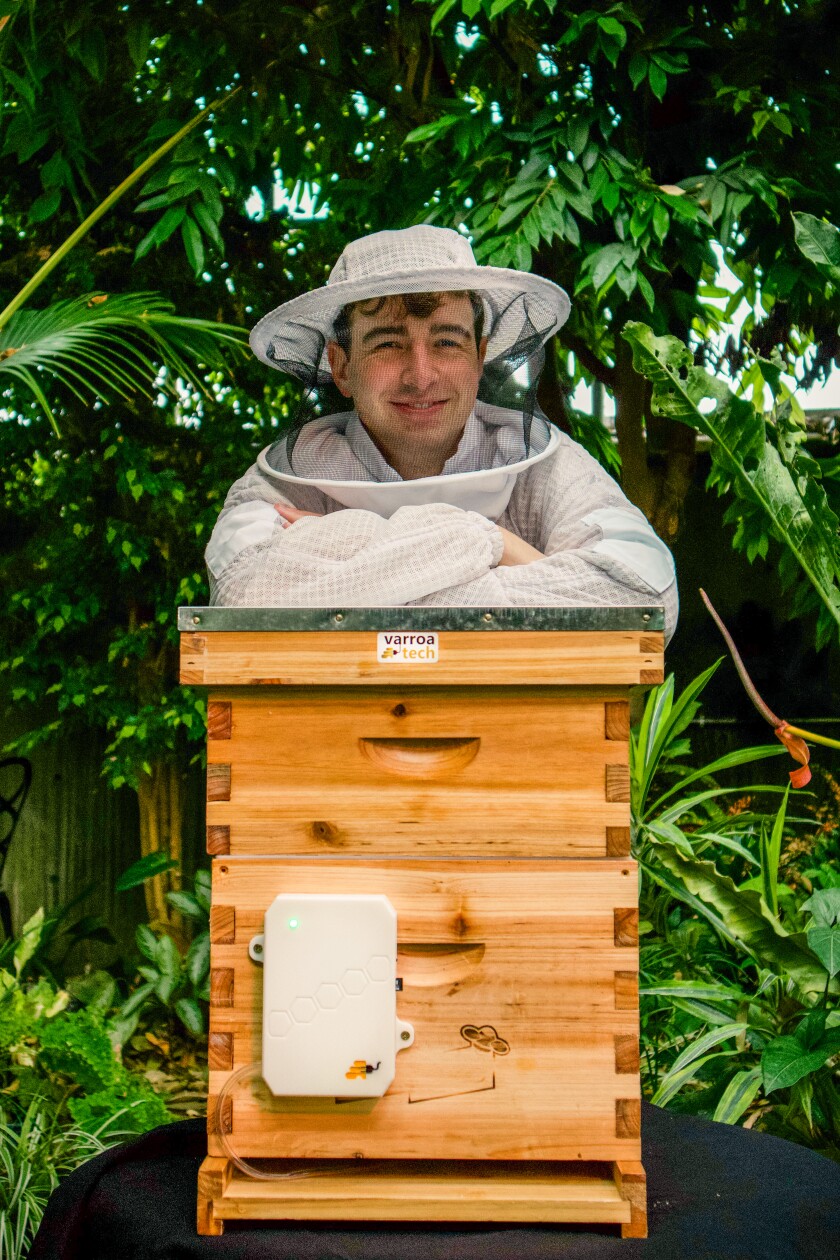What do beekeeping, management communication, and software development have in common? They’re just three of the disciplines that helped Varroa Tech, a startup that uses gas detection to warn beekeepers of dangerous parasite levels in their hives, to win $16,500 and the 2024–2025 Student Innovator of the Year (SIOY) competition, hosted by the Ira A. Fulton College of Engineering and the Rollins Center for Entrepreneurship and Technology at Brigham Young University.

The company began as the brainchild of a student team participating in the Crocker Innovation Fellowship, a program designed to give students a year-long experience working on interdisciplinary teams to create more effective businesses solutions. In Varroa Tech’s case, the fellowship brought together seven students from three BYU colleges: two from the BYU Marriott School of Business, one from the College of Life Sciences, and four from the Ira A. Fulton College of Engineering.
Tyler Lenning, CEO of Varroa Tech and an environmental science and sustainability major from Mission Viejo, California, has enjoyed the interdisciplinary collaboration on the team. “When you go into the real world with a job, it’s not like you’re just working with a team of engineers. For any company, you have marketers, designers, strategists, and engineers,” he says, adding that the experience has also demonstrated how people approach the same task differently.
Information systems graduate Devon Wolsleger has seen how the students studying various disciplines brought different strengths to the project. Wolsleger developed the app that delivers the device’s mite detection information—gathered through a hardware system of hoses and a box-like device created by recent BYU electrical engineering alum Logan Cropper—to beekeepers’ phones, giving users 24-hour access to their hive’s health information. While Wolsleger credits Lucas Sullivan, an entrepreneurial management graduate who has spearheaded marketing and product management, and Lenning for their business sense, Wolsleger emphasizes that it was Cropper who brought their research to life by leading the hardware engineering and development.
Other students came to Varroa Tech with backgrounds in cybersecurity, mechanical engineering, and industrial design. “They helped out in their own regards,” Wolsleger adds. “It was cool how all of us from our different backgrounds and perspectives were able to come together and build something.”
Varroa Tech was also aided by a plethora of other BYU resources. The team leaned on Crocker mentors, including Associate Professor of Entrepreneurship Nile Hatch, who helped assess “willingness to pay” data and which items to prioritize in the product’s early development. The data sped up Varroa Tech’s research process considerably, fueling their shift to gas detection methods. The BYU Apiology Association, which practices beekeeping, also let Varroa Tech test their product on the association’s hives in the early stages of product development.

Additional assistance was provided by Liz Dixon, associate professor of management communication at BYU Marriott, who helped prepare Lenning and Wolsleger for the team’s final SIOY pitch. Over multiple coaching sessions, Dixon, a beekeeper herself, helped the duo polish and focus their presentation on the pain point their product solves. Wolsleger specifically remembers how he and Lenning went to her office the day before the competition and drilled their four-minute presentation more than 15 times until they “felt totally comfortable.” Wolsleger credits, “She was a huge reason why we won SIOY.”
Since winning the competition, Varroa Tech has only received more support. A team of management communication students chose to do a class project on Varroa Tech—completely unsolicited—and conducted a PEST analysis on the company’s potential for international expansion. A class of MBA students also offered to perform competitor analysis for the company. “It’s super cool to see that Varroa Tech has grown from a little Crocker team,” Sullivan says. “It’s fun to see how excited everyone is about how big of a project this can become.”
As Varroa Tech continues product refinement, moving to test on 200 hives this year, Sullivan remarks that for him, the company is about more than just building a business; the team’s goal is to increase agricultural output and make produce cheaper and more available. “I think that’s why everyone has been so eager to participate because people can acknowledge the value that we’re trying to bring. It’s just exciting to be a part of,” he says.
Lenning also feels that a focus on serving others, not just profit maximization, is critical for students and businesses to incorporate in their work: “If you’re not serving others, then there’s really no point. At BYU, it’s ‘Enter to learn; go forth to serve.”
_____
Written by Katie Brimhall